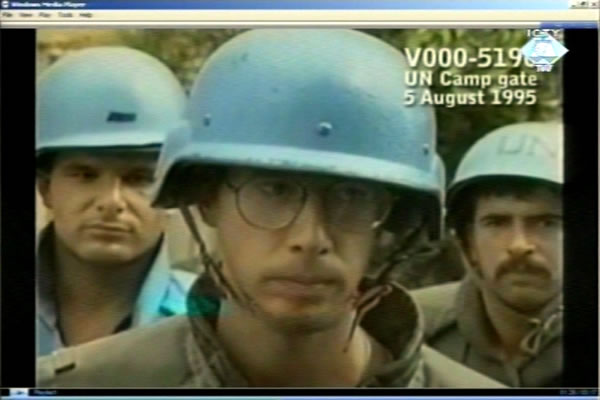Home
CROATIAN ARTILLERY WAS ‘BAFFLING’
According to Canadian general Andrew Leslie, military professionals in the UN peace-keeping forces found the target selection of the Croatian artillery in Knin on 4 August and 5 August 1995 ‘puzzling and baffling’
 Andrew Leslie, head of the UN peacekeeping forces in the Sector South in Krajina
Andrew Leslie, head of the UN peacekeeping forces in the Sector South in Krajina At the end of his three-day testimony at the trial of Croatian generals charged with crimes committed in Operation Storm and its aftermath, Canadian general Andrew Leslie summarized the impressions he and his fellow UN peace-keepers formed about the shelling of Knin on 4 and 5 August 1995.
‘Throughout the shelling’, General Leslie said, ‘we as professional soldiers couldn’t fathom what the Croatian Army was actually targeting. We could see why they shelled the anti-aircraft battery but not the criteria for the distribution of fire on other targets throughout the town. Apart from the battery, we saw very little evidence that any military targets had actually been hit, neutralized or destroyed. We found the Croats’ target selection ‘puzzling and baffling’.
General Leslie spent most of his military career – spanning thirty years - in the artillery. In August 1995, he was the chief of staff of the UN peace-keeping force in Sector South in Krajina. Now he is the commander of the Canadian ground forces. In the course of his testimony today, he explained there were two basic categories of artillery targets. There are ‘pinpoint targets’ that have to be attacked directly with accurate weapons and ‘area’ targets that allow the so-called indirect fire covering the wider area where the target is located. In his opinion, when Operation Storm was launched, the Croatian army didn’t have technology to engage ‘pinpoint’ targets without running a high risk of collateral damage.
The presiding judge asked what the alternative would be in such a case. The witness explained, ‘If you do not have the accuracy guaranteeing that the military target located in the civilian environment will be hit, then you do not engage that target’.
During his stay in Knin, Leslie met with General Ante Gotovina and General Ivan Cermak a few times. He described Gotovina as ‘a dynamic, charismatic and aggressive person, intelligent and determined’. The ‘aura of command’ could be felt in his presence. Cermak was presented to him as the military governor of Knin. Leslie's impression was that he was ‘a conciliatory and cooperative man’, frustrated because he could not make political decisions. Cermak struck Leslie as ‘always worried, as if he carried the whole world on his shoulders’. In Leslie’s words, Gotovina was ‘a warrior’ and Cermak was ‘an administrator’.
After General Andrew Leslie completed his evidence, the prosecution called Mile Sovilj from Gracac, a small town in Lika. Sovilj will continue his testimony tomorrow.
Linked Reports
- Case : Gotovina et al. - "Operation Storm"
- 2008-04-23 GENERAL LESLIE UNDER FIRE FROM GENERAL GOTOVINA’S DEFENSE
- 2008-04-22 ‘INDISCRIMINATE AND DELIBERATE’ SHELLING OF KNIN
- 2008-04-17 DEAD BODIES WERE RUN OVER BY TANKS
- 2008-04-25 CIGARETTE CASE HELPS WITNESS RECOGNIZE HIS FATHER
- 2008-04-28 WAS GENERAL CERMAK ’ARROGANT’ OR ’POWERLESS’?
- 2008-04-29 WAS SHELLING OF KNIN ’UNPRECEDENTED’
